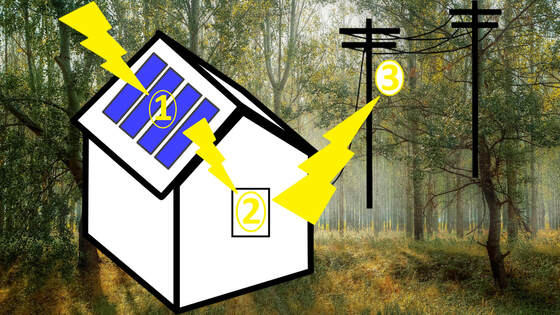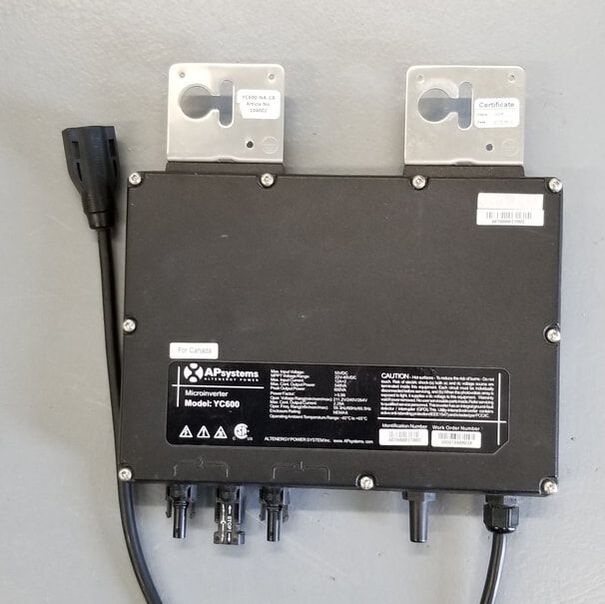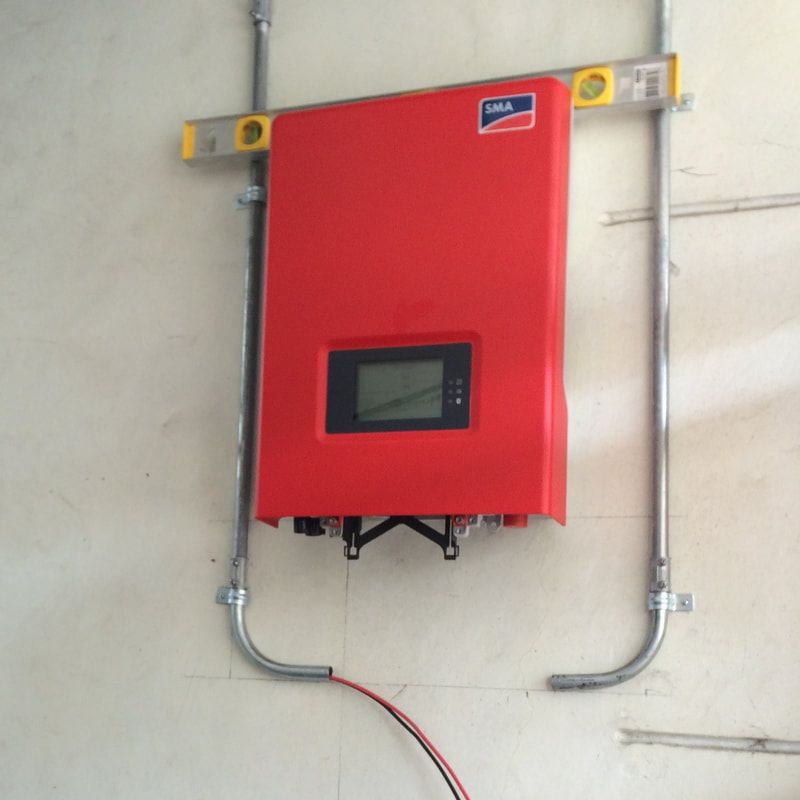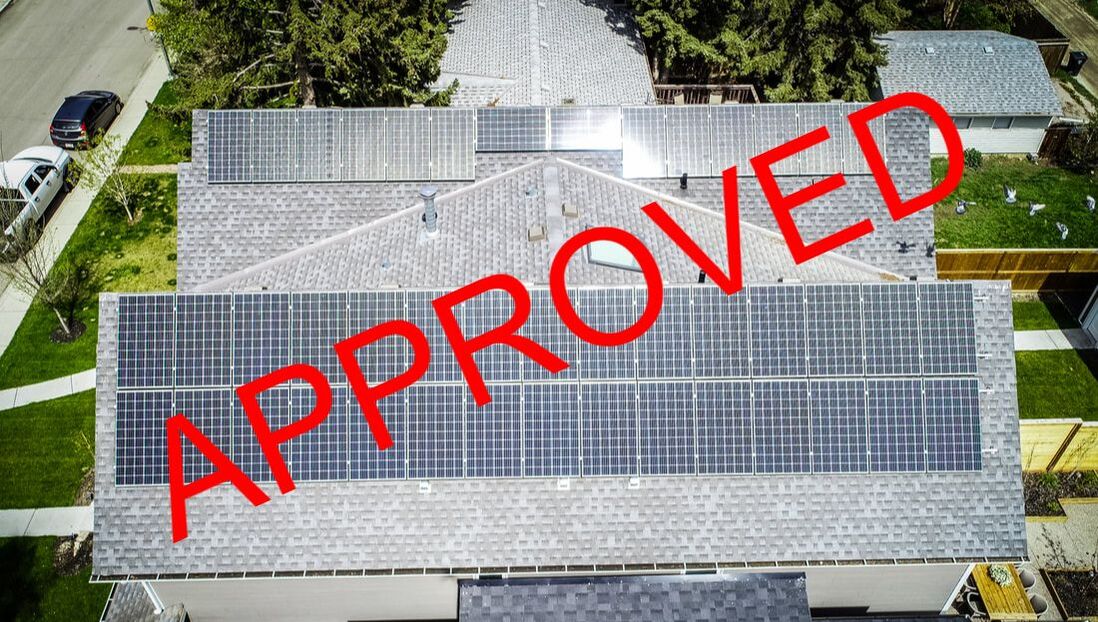Offset your electricity use
Install a grid-tied PV system and enjoy clean green solar energy during the day and a connection to the electricity grid at night. |
It's simple to use solar energy to power your home
 1. PV panels generate electricity from the sun.
2. Electricity flows to the main electrical panel in the house where it is used or...
3. Electricity that isn't needed at the moment is exported to the grid.
1. PV panels generate electricity from the sun.
2. Electricity flows to the main electrical panel in the house where it is used or...
3. Electricity that isn't needed at the moment is exported to the grid.
Grid-tied PV systems are the simplest and cheapest way to take advantage of solar energy. They don't store any energy, so the electricity you generate is either used immediately by you or is exported to the electricity grid for others to use. Depending on where you live, you're usually either credited or paid for the electricity you export to the grid. In addition to being much cheaper than other types of PV systems, i.e. grid-tied systems with a battery backup and off-grid systems, grid-tied systems also allow you to import electricity from the grid, so you don't have to rely exclusively on your PV system for your electricity. The disadvantages of a grid-tied system are that, because you're still connected to the electricity grid, you have to pay grid-connection fees and if the electricity grid goes down then your system won't function until the grid is brought back up.
Grid-tied PV systems are made up of only three parts: modules, also known as PV panels; racking to secure the modules to your roof, wall, or ground mount; and a string inverter or microinverters to transform the DC power generated by the panels into AC power that your electrical panel can use. All you need to install a grid-tied PV system is a place to put the panels, a conduit to connect those panels to your electrical panel, and an electrical panel that's connected to the electricity grid.
Grid-tied PV systems are made up of only three parts: modules, also known as PV panels; racking to secure the modules to your roof, wall, or ground mount; and a string inverter or microinverters to transform the DC power generated by the panels into AC power that your electrical panel can use. All you need to install a grid-tied PV system is a place to put the panels, a conduit to connect those panels to your electrical panel, and an electrical panel that's connected to the electricity grid.
Options for grid-tied PV systems
Microinverters
Microinverters are about the size of a sheet of paper and are installed on the back of the solar panels. Each microinverter supports a certain amount of wattage, meaning that several panels, generally between one and four, can be connected to a single microinverter. The result is a more modular system that is easier to upgrade later on should you choose to do so; if upgrading a string inverter system, then you'll usually have to buy a whole new string inverter. Microinverters also provide panel level reporting, so if one panel is malfunctioning it's easier to track down, and unlike string inverters they don't require all the panels to be operating at the same wattage.
|
String inverter
A string inverter is larger than a microinverter, about the size of a desktop computer, and is usually installed in the utility room. All the solar panels connect into the string inverter. For most residential systems, you'll only need one string inverter, and the cost of a single string inverter may be less than a comparable number of microinverters, depending on the size of the system. However, because all the panels are connected, they all need to be operating at the same wattage, meaning that if one of your panels isn't operating at full efficiency, perhaps due to shading or snow cover, then all the panels will be hamstrung down to the level of the weakest panel. Finally, string inverters may, depending on local regulations, require a rapid shutdown feature due to the large amount of DC electricity running from the panels to the inverter. This can add additional expense.
|
Regulatory framework for grid-tied PV systems
Though the regulations for grid-tied PV systems vary somewhat from jurisdiction to jurisdiction, they tend to have the same general requirements; you'll need to get planning approval for your system, and you'll need permission to supply power to the electricity grid.
Planning permission
Like most household renovations, installing a PV system requires planning approval from your city or local area. This usually involves providing an explanation and drawings of the proposed changes, as well as payment of certain administrative fees.
|
Microgeneration permissionIn order to protect the integrity of the electricity grid, your electricity provider will need to grant you permission to supply electricity back into the grid. In most cases, all this involves is contacting your electricity provider and notifying them of your intent to supply electricity to the grid. You may need to upgrade your meter so it can track both imports and exports, and there is often a fee associated with the upgrade.
|
Unlock the power of the sun with a FREEDOM WON solar heater
|




